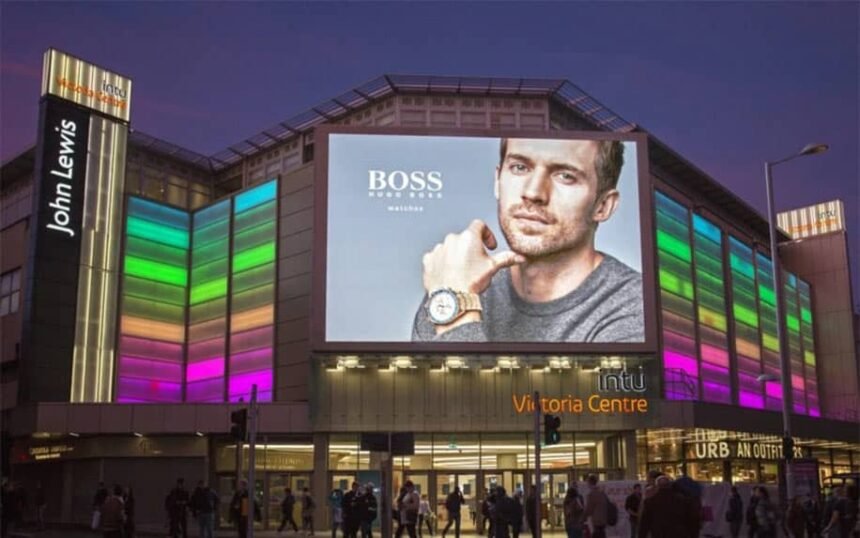Billboard advertising has long been an integral component of urban landscapes, captivating passersby with its eye-catching messages and large format size. Billboards in Los Angeles have long been used as part of marketing strategies; from the iconic Sunset Strip in LA and Times Square in NY; billboards have played an essential part. Yet the landscape of billboard ads is quickly shifting as digital technologies transform their reach and impact.
Traditional Billboard Advertising
Billboards were once prominent displays that stood steadfastly in urban and suburban landscapes, typically consisting of printed posters attached to sturdy frames or structures and strategically located along major highways, busy intersections, or iconic city streets. Their effectiveness lay in their simplicity – as long as bold visuals caught people’s eyes while their succinct messaging made its point clear enough.
Traditional static billboards were very effective during their time; however, they lacked the dynamic versatility offered by their digital counterparts today. Their presence depended heavily on physical presence and strategic placement to reach passing motorists and pedestrians; creating messages that quickly captured viewer interest without real-time updates was challenging but ultimately led to digital billboards emerging, ushering in an exciting era of interactive and engaging advertising displays.
The Rise of Digital Billboards
Digital technology revolutionized billboard advertising, giving rise to dynamic billboards able to display dynamic content in real-time updates. Unlike static billboards which merely display static images or videos, digital displays use LED screens capable of showing dynamic imagery or videos and allow advertisers to tailor messages according to factors like time of day, weather conditions, or audience demographics.
Digital billboards have vastly broadened advertisers’ creative options. Now advertisers can incorporate interactive elements, like live social media feeds or virtual reality experiences, that engage viewers and deepen relationships between brands and their consumers. Such engagement not only strengthens brand visibility but also builds deeper bonds.
Technological Innovations in Digital Advertising
Digital billboards have seen rapid adoption due to advances in display technology. High-definition screens with increased resolution and brightness help standout ads against bustling urban settings while real-time data analytics allow advertisers to analyze campaign effectiveness as it happens and adjust content based on performance metrics.
Integrating Digital Billboards into Advertising Strategies
Major cities like New York and Los Angeles have integrated digital billboards into their advertising landscapes as integral elements. Brands use these dynamic displays to launch targeted marketing campaigns that resonate with local audiences; digital billboards along Sunset Boulevard in Los Angeles for instance are used both to advertise Hollywood blockbusters as well as local events and cultural initiatives.
Successful digital billboard campaigns take full advantage of digital’s immediate and visual effects to stay attuned to changing consumer tastes and market dynamics, adapting quickly so their messages remain compelling and timely.
Environmental and Regulatory Considerations
While digital billboards present many advantages over traditional print advertising, they also raise environmental and regulatory considerations that warrant careful examination. LED screens that power digital billboards require significant energy usage that must be managed responsibly to achieve sustainability; furthermore, disposal after use presents challenges due to the presence of electronic components as well as potentially toxic materials present within each billboard.
Municipalities and urban planners face the additional task of balancing digital billboard benefits with concerns about light pollution in densely populated areas – something bright digital displays can exacerbate. Such light can disrupt wildlife as well as human residents in these locations.
Future Trends of Billboard Advertising
Looking forward, billboard advertising looks set for continued evolution towards digital and interactive formats. Technological innovations like geo-targeting and real-time data integration promise to change how advertisers connect and engage with their target audiences; geo-targeting allows advertisers to tailor messages based on viewers’ locations or demographics to maximize relevance and impactful messages for maximum effectiveness.
Personalized content delivery will likely shape the future of billboard advertising. Advertisers can leverage data analytics to tailor ads directly for different audience segments in real time. Furthermore, advancements in display technology should lead to thinner and more energy-efficient screens that seamlessly blend into urban architecture.
Conclusion
The transformation from static to digital billboard advertising marks an extraordinary transformation in how brands communicate with audiences. Billboard ads continue to play an effective role in reaching consumers in high-traffic areas like Times Square and Los Angeles. As technology improves, digital billboards will play even greater roles in providing targeted messages and driving engagement – whether for product launches or raising awareness campaigns alike!










